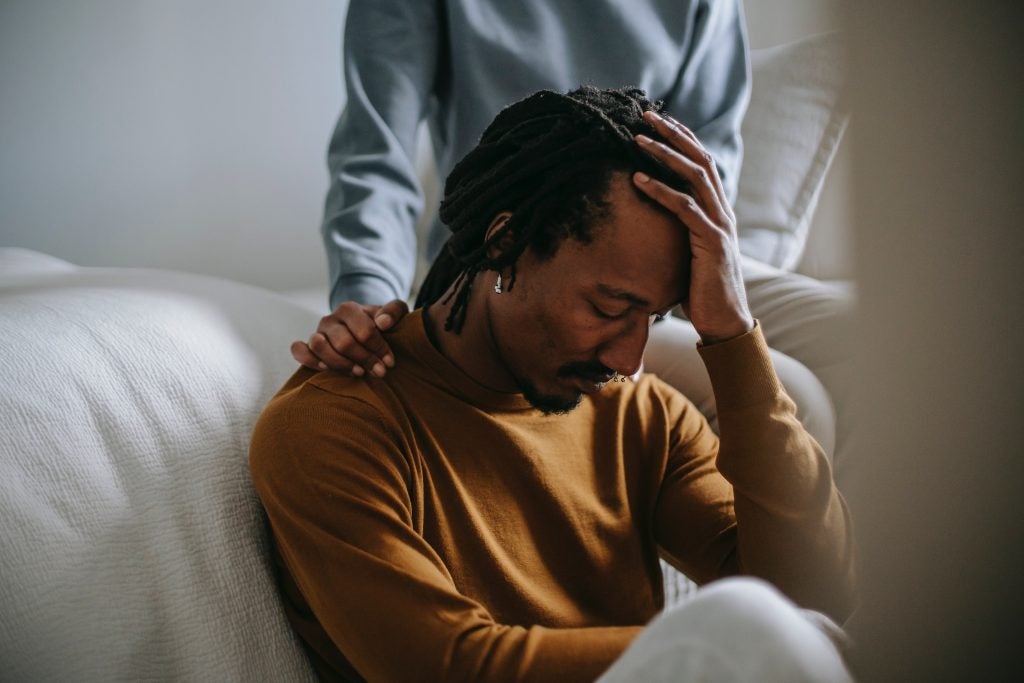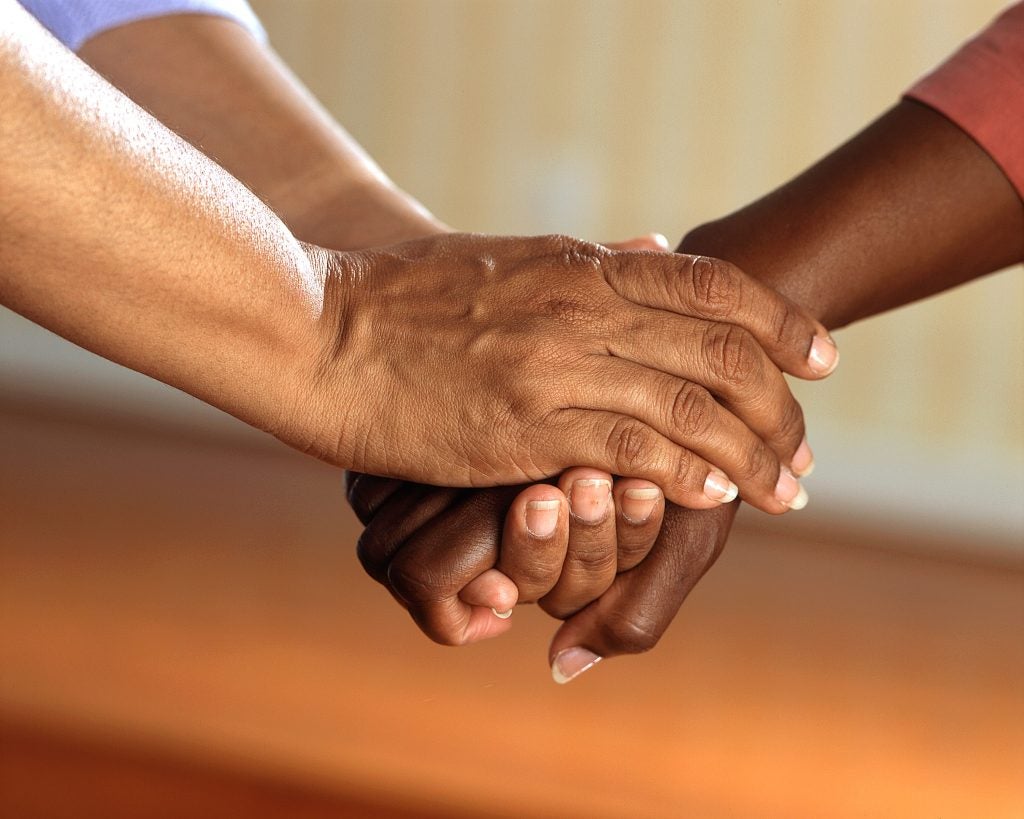
Disclaimer: We acknowledge that there are many different words that individuals use to describe themselves after experiencing abuse. In this article we use the term survivor for the sake of consistency. We acknowledge that there are many different ways of processing abuse and believe each individual person should choose the language that they are most comfortable with. Unfortunately, abuse is a prevalent issue that many people in the United States have to struggle with on a daily basis. Every minute, 20 people are abused by an intimate partner, which equates to over 10 million people in the span of a year.1
In terms of physical abuse, 1 in 3 women and 1 in 4 men are survivors of physical abuse, and 1 in 4 women and 1 in 7 men are survivors of severe physical abuse. Furthermore, 1 in 7 women and 1 in 18 men have been stalked by an intimate partner. Physical abuse of a partner accounts for 15% of all violent crimes. Nineteen percent of these domestic violence crimes involve a weapon.1
For sexual abuse statistics specifically, 1 in 5 women and 1 in 71 men in the United States have been raped at some point in their lifetimes. Approximately half of both females and males were raped by someone they knew. Of the perpetrators that they knew, half were intimate partners of the females and a quarter were intimate partners of the males.1 Abuse tends to have an incredibly undesirable impact on survivors, and many individuals who experience physical, sexual, and mental abuse deal with many of these negative effects later on in their lives. Some of these effects include an increased susceptibility to sexually transmitted diseases as well as infections, anxiety, depression, suicidal behavior, post-traumatic stress disorders, miscarriage, stillbirth, nutritional deficiencies, gastrointestinal issues, neurological disorders, hypertension, cancer, cardiovascular problems, and substance abuse.
However, there is hope for survivors of abuse. There are actions they can take to escape emergency situations, access free resources, receive psychological and counseling services, obtain medical attention, take legal action, and promote social change.1
Table of Contents
Emergency Situations
If you find yourself in an emergency situation in which your life, physical well-being, mental stability, or sexual safety are being threatened, we would strongly recommend for you to contact local police forces immediately. If you are located in the United States, we advise you to call 911 as soon as possible. Police forces in your area will usually be able to remove you from your abusive circumstance.
Police officers are trained to handle various cases of abuse and domestic violence. Although it may depend on your specific state and city, it is essential to understand that abusive situations are viewed as high priority and as life-threatening situations. Police departments take these kinds of reports extremely seriously and will travel to your designated area in order to respond to the situation.
Many police departments will send multiple officers to the site of abuse. The purpose of allocating more than a singular officer is so that tasks can be delegated and completed most efficiently. For example, one officer may check arrest warrants and criminal history, while the other separates the survivor and perpetrator. The officers separate people so that they can search for weapons and firearms and communicate with each person involved on an individual basis. Police officers will also collect evidence, such as interviews, physical evidence, photographs, video and audio statements, neighbors and witness statements, and any notes that they observe about the abusive situation.
Finally, they will usually conduct a risk assessment in order to determine the degree of danger the survivor is in. If police officers determine that survivors are experiencing severe violence, they will delegate a safety plan to keep them away from the abusive situation while providing them with the appropriate resources.2
Free Resources
There are many resources from national and regional survivor support organizations that are either free or very low cost. These free resources are organized into two distinct categories: national hotlines and regional service providers. Usually, individuals call the national hotline if they are in a crisis and do not feel as if they are in the right place to find and get in contact with their local regional service provider. Oftentimes, the personnel that facilitates the conversation through the national hotline will direct the caller to the appropriate professionals within their local community. Another reason why a person would call the national hotline is if they are in extreme need to contact someone to receive a form of emotional and social support. A regional service provider, however, can give a survivor of abuse more specific resources that are tailored toward their state, county, and city. They can also link people with more in-person support systems and networks.
Overall, there are many benefits to accessing national hotlines and regional service providers. It provides people who have undergone abuse with an official central service that has a wealth of trained professionals in medical, psychological, legal, and social fields. Oftentimes, survivors of abuse will use both resources in order to better understand their situations, receive the help that they need, and obtain attention from trained professionals who are educated on how to handle abusive situations.
National Hotlines
The national sexual assault telephone hotline is 800-656-HOPE (4673). It is highly recommended that survivors of abuse call this phone number in order to connect with a trained staff member.
When one calls 800-656-HOPE (4673), they are connected to a local Rape, Abuse, & Incest National Network (RAINN) organization based on the digits in one’s phone number. Those who are using a mobile phone can enter their ZIP code so that they can be more accurately connected to the nearest regional service provider.
The national hotline is completely confidential, so none of the information that a person provides to the hotline personnel about their situation will be disclosed. They will receive emotional and social support from a trained staff member, help finding a nearby health facility, information about how to access sexual assault services and forensic exams, local community resources that can assist with psychological recovery, referrals to professionals in one’s area, details about the specific laws in one’s region, and basic medical advice.
Regional Service Providers
Regional service providers can be more suitable to a survivor of abuse due to the fact that, unlike national hotlines, they can give in-person assessment, evaluation, treatment, and service. Furthermore, they are equipped with the tools that are best tailored to one’s specific local community.
These local service providers are staffed with individuals who are highly trained to deal with specific situations that accompany abuse. The services from these regional centers are usually free or very affordable.
They offer information and resources such as education, emergency shelters, volunteering events, one-on-one counseling services, group counseling services, support group therapy, accompaniment to the nearest hospital facility, basic medical information, legal advising, and other forms of assistance for individuals who have experienced abuse.4
Psychological and Counseling Services

Survivors of abuse often experience negative psychological effects. Some common mental problems that survivors of abuse cope with include anxiety and panic disorders, depression, and post-traumatic stress disorder. There are, however, many mental health professionals that are scattered in regions and local communities all over the United States that are professionally trained in dealing with the effects of abuse.
Anxiety and Panic Disorders
Some prevalent signs of generalized anxiety disorder include heart palpitations, accelerated heart rate, sweating, trembling, shortness of breath, chest pain, nausea and gastrointestinal distress, dizziness, fatigue, derealization, depersonalization, chills, hot flashes, and intense fear of losing control or going crazy. Panic disorder is distinct from generalized anxiety disorder because it is characterized by recurrent, unpredictable panic attacks that may cause the sufferer significant distress. Survivors of abuse specifically experience these symptoms as they are relevant to the circumstance in which they were abused.
There are many different ways to treat anxiety and panic disorder. Some of these include antianxiety, or anxiolytic medications. For acute anxiety, psychiatrists prefer to prescribe benzodiazepines such as Xanax, Ativan, Klonopin, or Valium. These medications are best used when an individual is experiencing acute anxiety or a significant panic attack at one specific point in time and would like to relieve it by taking medication. For chronic anxiety, mental health professionals prefer selective serotonin reuptake inhibitors (SSRIs) such as Prozac and Lexapro.
Psychotherapy is another way for survivors of abuse to relax, talk through their situations, learn positive coping strategies, master relaxation and meditation techniques, as well as train themselves in stress management. Lifestyle adjustments such as exercise, diet, and sleep are also great ways to alleviate the effects of anxiety and panic as a result of abuse.5
Depression
Depression is often characterized by intense sadness, guilt, shame, and a sense of worthlessness. Thoughts of death and suicide may also permeate an individual who suffers from depression. A depressed person may also experience significant weight change, inability to sleep properly, extreme agitation and irritability, fatigue, and difficulty concentrating. Furthermore, individuals who suffer from depression may not have the same amount of enjoyment and fulfillment in activities that used to bring them a lot of happiness. Oftentimes, survivors of abuse will experience depression and feel as if their life has no meaning after they have been abused.
There are a multitude of treatment options for abuse survivors who have depression. Psychotherapy is a great way for survivors of abuse to express their feelings to a mental health professional in a confidential, safe space. A therapist or mental health counselor may ask the depressed patient to change their way of thinking through cognitive therapy by reassessing and adjusting self-defeating thought patterns. They may also try stopping and replacing automatic negative thoughts. The psychologist may incorporate logic exercises into therapy, by asking their client if their thinking is reasoning through a situation or exaggerating the negative aspects an event. Many survivors of abuse find that psychotherapy can improve their depression dramatically.
Furthermore, people with depression can benefit from taking antidepressant medication. Some of these include SSRIs such as Lexapro and Prozac. Other times, psychiatrists and mental health professionals may treat their depressed patients with atypical antidepressants such as Effexor and Cymbalta in order to reduce unwanted side effects. Usually, the medication begins to take effect in several weeks (Warning: If the medication only takes a couple days to have an effect, this may be a sign of mania, and should be consulted about with a psychiatrist to change the medication). If the depressed individual feels as if a particular medication does not work for them because its effects are not strong enough or that it produces too many unwanted side effects, a psychiatrist may switch them onto a different medication until they find one that is most suitable for them.6
Post-Traumatic Stress Disorder (PTSD)
Another frequent psychological effect of abuse is post-traumatic stress disorder (PTSD). Rape and sexual assault are some of the most common traumas that elicit post-traumatic stress disorder. Physical and emotional abuse, however, can also cause an individual to experience PTSD.
Some of the symptoms of PTSD include repeated flashbacks of the abusive incidence, avoidance of triggers that can precipitate memories of the abuse, and extreme distrust of other individuals. PTSD can be acute (in which it takes place between several days and a month), chronic (when it occurs for over a month), or delayed (where the symptoms of PTSD do not begin until after an extended period following the abuse).
There are many different treatment plans an individual can take for PTSD, such as psychotherapy and medication. Antianxiety, antidepressant, antipsychotic, and sleep medications are all options mental health professionals consider when they assess the specific symptoms of their patients. For example, an individual who suffers panic attacks because of their recurrent memories of the abuse may be most suited for an antianxiety medication, a person who has extreme paranoia about their abuse may benefit most from an antipsychotic medication, while another survivor who suffers from insomnia because of their abuse may experience the most improvement from a sleep medication. Psychotherapy such as critical incident debriefing, group therapy, cognitive skills, and stress management are also viable options to treat PTSD.7
Medical Actions
Sexual abuse survivors often seek out medical attention. Some doctors may check for the risk of pregnancy in addition to the presence of specific sexually transmitted infections through a series of evaluations and tests. Individuals who have been sexually abused are most often diagnosed with trichomoniasis, gonorrhea, chlamydia, and bacterial vaginosis. After these tests have been conducted, physicians will usually provide a treatment plan that may include emergency contraception, vaccinations, and medications.8
Evaluations
After an event of sexual abuse, a physician may order some initial examinations in order to determine if the survivor has any sexually transmitted infections. They may test for trichomoniasis and gonorrhea at the site of penetration. Some health examiners may also take urine and vaginal samples in order to test for the presence of bacterial vaginosis. Serum samples (centrifuging blood to remove cellular components, and analyzing its contents), are also taken in order to evaluate for the presence of HIV, hepatitis B, and syphilis.8
Treatment Plans
If a physician decides that a survivor of sexual abuse is particularly at risk for an unwanted pregnancy, they may choose to administer emergency contraception if patient consents. If the health professional discovers that the survivor tests positive for chlamydia, gonorrhea, or trichomoniasis, they may assign an antibiotic medication regimen.
If the patient is found to have hepatitis B, they may also be given a postexposure hepatitis B vaccination. A human papillomavirus (HPV) vaccination is also given to sexual assault survivors if they have not received one or did not complete their vaccination regimen. Due to the fact that HPV is the most common sexually-transmitted infection, it is highly recommended that females between the ages of 9 and 26 and males between the ages of 9 and 21 receive an HPV vaccination.8
Human Immunodeficiency Virus (HIV)
Human immunodeficiency virus (HIV) is one of the less common sexually transmitted infections. This is due to the fact that the per-act risk for HIV is about 0.1% to 0.2% for receptive vaginal intercourse. The per-act risk is slightly higher for receptive anal intercourse at 0.5% to 3%. Receptive oral intercourse’s risks for HIV are significantly lower than those of receptive vaginal intercourse and receptive anal intercourse. Lesions in the genital area, however, can dramatically increase the risk of HIV.8
Generally, a healthcare professional would administer a postexposure prophylaxis (PEP) medication regimen, which often leads to an 81% reduction in the risk of an HIV infection. Usually, the physician will provide the likelihood of the assailant having HIV, the survivor’s risk of being infected with HIV, the time since the assault, as well as other benefits and risks of being put on a postexposure prophylaxis medication regimen. The purpose of this information is so that the survivor can decide what sort of treatment plan is best suited for them specifically.8
Children and Sexual Abuse
Children who are survivors of sexual abuse are often screened for specific sexually transmitted infections. If a healthcare professional finds that a child who is beyond the neonatal period has a sexually transmitted infection, this is strongly evident that the child has been sexually abused. Some of these sexually transmitted infection indicators include a child who has postnatally acquired gonorrhea, syphilis, chlamydia, and HIV.8
If a health provider finds that a child brought under their care has any one of these sexually transmitted infections, they have reasonable cause to suspect that the child has been sexually abused and would thus have to contact their regional child-protection service agency or local police forces. The reporting guidelines, however, vastly differ depending on the state.8
Legal Actions

Every survivor of abuse should feel empowered to pursue legal action. Many individuals who have endured abuse may feel that this is the best course of action in order to settle financial, sexual, physical, mental, or emotional grievances. However, other survivors of abuse may feel as if seeking legal action is unnecessary and may cause undue stress. The decision to seek out legal action is entirely within the jurisdiction of the abuse survivor. There are different types of legal charges one can make, such as criminal charges and civil lawsuits.
Criminal Charges
One can elect to take legal actions in the form of criminal charges if they find that the perpetrator of their abuse has committed an act of physical violence or rape against them. Violence committed by one person against another is classified as aggravated assault and battery.9 If someone was raped by their perpetrator, which is legally defined as penetration of orifices in the body without consent, they can choose to pursue legal action for sexual assault charges.9
Civil Lawsuits
A survivor of abuse may also choose to file a civil lawsuit against their perpetrator for damages. For example, a survivor may pursue legal action so that their assailant is required to pay for their hospital bills, psychological and counseling fees, emotional suffering, and costs of hiring an attorney.
Social Actions
Abuse survivors often find benefit in seeking emotional and moral support from family members, individuals in their friend groups, as well as peers in their workplace, academic, or community settings. A person who has experienced abuse may also find empowerment in marching for a sexual assault awareness movement, volunteering for a sexual assault organization, receiving training to help other survivors of abuse, and acting as advocates for abuse survivors within their communities. Some of these supportive communities and resources include Substance Abuse and Mental Health Services Administration (SAMHSA), the Rape, Abuse & Incest National Network (RAINN), the National Institute on Drug Abuse, and Bikers Against Child Abuse.
Recovery
It is important to acknowledge the cycle of abuse and how it tends to keep survivors trapped in its never-ending pattern. Abusive cycles generally start with an escalating buildup of tension between the perpetrator and the survivor. Once this tension boils over, it can transform into a climactic incident, whether that is in the form of physical, verbal, or sexual violence. After the abuse has occurred, the perpetrator apologizes and reconciles with the survivor, easing back into a state of calm in which the perpetrator and survivor move on from the abusive circumstance. The recovery gradually merges back into a state of tension, and the cycle continues. After survivors of abuse finally separate themselves from this cycle, they tend to encounter difficulties with recovering on their own.4
Aside from the multitude of medical, psychological, legal, and social actions a survivor can take, there are also many ways in which a survivor can better themselves as an individual. Abuse can be an exceptionally debilitating and disempowering experience, and no one ever deserves to be physically, verbally, or sexually abused. It is common to feel dirty, ashamed, embarrassed, sad, angry, or alone after being abused.
Many survivors of abuse find solace in seeking support from their family and friends, as well as peers in their academic and professional communities. Practicing self-love techniques such as journaling the positive events that happened in one’s life that day as well as looking into the mirror and naming several features one likes about themselves have been reported to be beneficial.5 Self-care methods such as relaxing at the end of the day by watching a movie or reading a book, listening to music to destress, as well as participating in any sort of hobby or activity that brings one happiness are all great ways to recover from an abusive situation.
Concluding Remarks

Overall, there are many actions survivors of abuse can take, such as contacting police authorities in emergency situations, accessing resources like national hotlines and regional service providers, obtaining psychological and counseling services, seeking out medical attention, taking legal actions, as well as promoting social change. Many survivors of physical, emotional, and sexual abuse like to use their unfortunate situations as ways to grow and better themselves as a person. Others recover by practicing self-love and self-care techniques, reaching out to family and friends, and avoiding self-blame. All in all, coping with abuse can be difficult, and the steps to move forward from it encompass a lot of different dimensions (medical, psychological, legal, social, and individual). However, there is hope for survivors of abuse to grow, learn, and empower themselves as human beings even after experiencing traumatizing circumstances. Abuse by no means defines a survivor but rather the actions survivors take after the abuse.
References
- “NCADV | National Coalition Against Domestic Violence.” The Nation’s Leading Grassroots Voice on Domestic Violence. Date Accessed: 25 May 2018.
- “How Police Are Trained to Respond to Domestic Violence.” Domestic Shelters. Date Accessed: 25 May 2018.
- “About the National Sexual Assault Telephone Hotline | RAINN.” Adult Survivors of Child Sexual Abuse | RAINN. Date Accessed: 25 May 2018.
- “Find Help Near You En Español.” RAINN | Rape, Abuse and Incest National Network. Date Accessed: 25 May 2018.
- “Depression.” Anxiety and Depression Association of America, ADAA, adaa.org/understanding-anxiety/depression. Date Accessed: 25 May 2018.
- “Depression.” National Institute of Mental Health, U.S. Department of Health and Human Services. Date Accessed: 25 May 2018.
- “PTSD: National Center for PTSD.” Negative Coping and PTSD – PTSD: National Center for PTSD, 1 Jan. 2007. Date Accessed: 25 May 2018.
- “Sexual Assault and Abuse and STDs.” Centers for Disease Control and Prevention, Centers for Disease Control and Prevention, 25 Jan. 2017. Date Accessed: 25 May 2018.
- “What to Expect from the Criminal Justice System | RAINN.” Adult Survivors of Child Sexual Abuse | RAIN. Date Accessed: 25 May 2018.
Last Updated: 29 May 2018.
